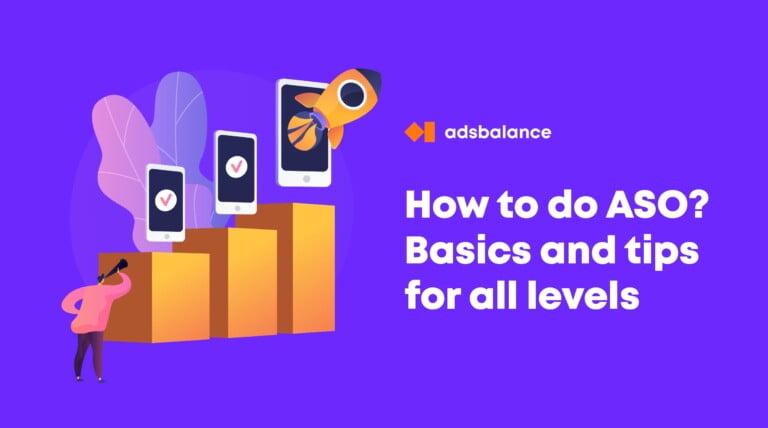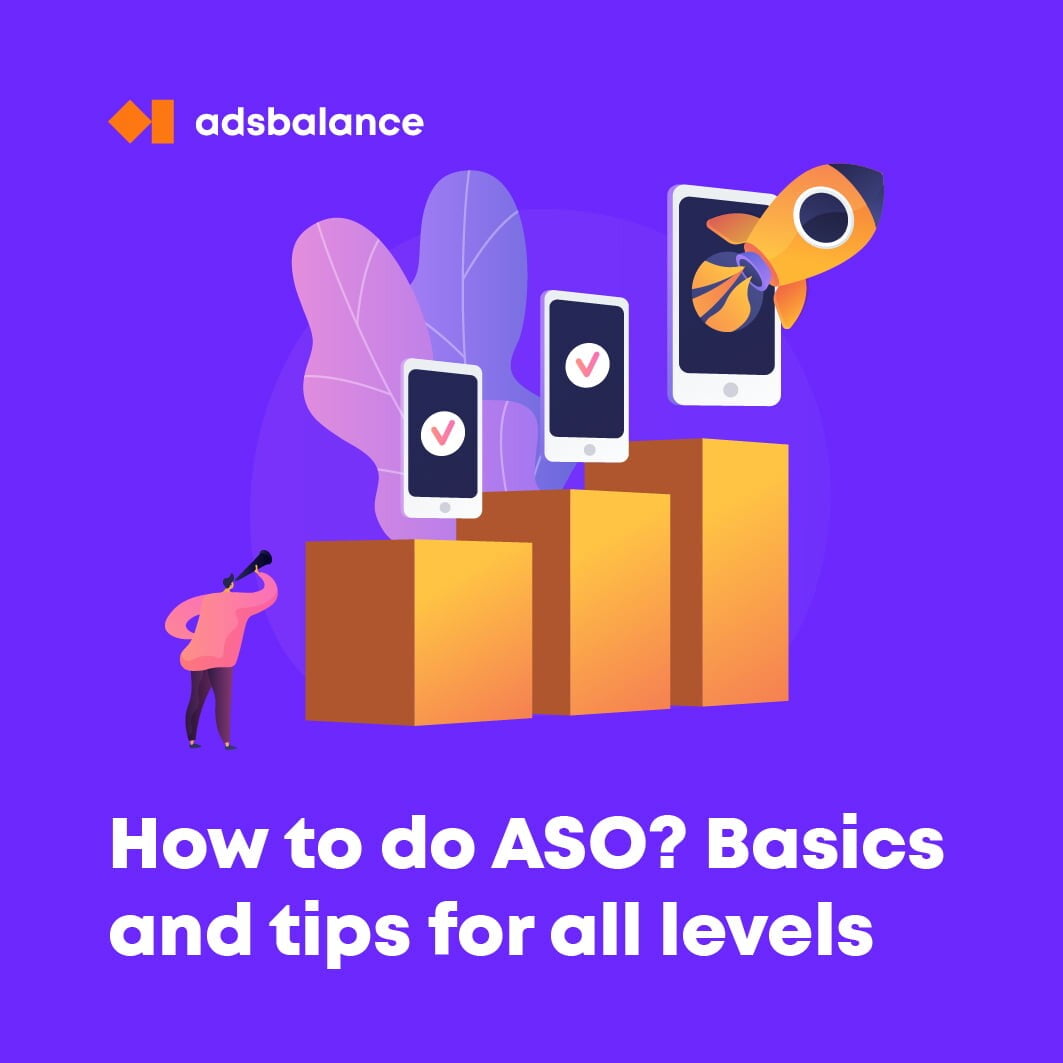
Every application on Earth needs organic downloads. However big your initial app promotion budget might be, you will not have a chance to spend it the best way if you don’t pay attention to your product’s looks and well-being in the App Store and Google Play.
Pretty much every single quote about app promotion mentions that there are more than 2.6 million apps in Google Play and more than 2 million in the App Store, so why would we break the tradition? On one hand, in fact, not many of us can get a hang of those digits: those who create applications sometimes get carried away and think they only compete with the top 50, forgetting the other millions would like to be top 50 if they could. On the other hand, you do need to be on the top charts to earn from your app, be it money, glory, or satisfaction.
So what do you need to do, remembering that user acquisition campaigns are not enough? It’s pretty clear that we are going to speak about ASO, or App Store optimization, which might be seen as a specific instance of SEO — search engine optimization, and is a series of steps that you take to rank higher when users search for the likely products.
Among all of the good things you can do for your product, it is one of the cheapest and might be done fully on your own, the only crucial expenditure item being the analytics tracking service. Maybe, graphic design/video production as well if you outsourced your app design and your own is terrific.
Why do you need organic installs?
Researchers say that an “organic” user is more loyal to the app and is more likely to spend money there, and less likely to uninstalls. Maybe people’s attitude towards their own choices is more ..reverential, what do you think?
How do people search for apps?
Most people just type the app name (if they know one) into the search field or just type in the keywords / the function the app must perform, usually one or two words. Both App Store and Google Play give you hints while you type: Apple suggests the needed apps at once while Google helps you find the most relevant search requests, being quite intelligent about the mistakes and typos, but not all of them.
So, where do we start?
It’s only natural that we start with the keywords. There are many tools for collecting keywords, some of them provide you with phrases specifically designed for app stores, but be ready for the fact that they might be not so good for some languages, so you may need to refer to the good old Wordstat.
You have defined the key phrases, what’s next?

Here’s a trickier thing: not only you need to choose the words that describe your proposition best, but also take into account the “density of the traffic”. To find the optimum keyword you need to define the search volume (= the number of search requests for the keyword) and the number of apps that match the keyword. The best keyword is a combination of the most often requests and the least number of competitors.
How do you name your app?
After (not before, but, of course, there are some exceptions) you define your keywords, it’s high time you thought about naming your app. We recommend you to keep the balance between the uniqueness/memorability of the name and at least some keywords inside. Like “yoga warrior”, oh, wait, there’s going to be unneeded traffic for the warrior word. Keep this in mind too in order not to mislead the users, because this would lower the conversion rate (we’ll get back to this later).
Picking the right category
Of course, the category you choose must describe the meaning of your app, but the principle is the same as for the keywords: you need to balance between the relevance and the popularity (crowdiness) of the category, since you have higher chances of visibility in the less popular destinations.
Visuals
- A beautiful icon helps users make their choices. It’s okay to have an abstract yet still well-designed logo if you promote any kinds of lifestyle apps and utilities. Games tend to display a glimpse of what’s inside, but don’t overindulge in trying to explain your style or your gameplay in a logo. Again, avoid misleading: a 3-d scantily dressed girl (in shining armor) might promote your strategy successfully, but it won’t help the retention rate if your game looks like Starcraft II inside (and we don’t imply it looks bad). Ideally, you ABCD-test several types of icons before launch.
- The second (more likely, the first) best thing is the screenshots: they are the shop window of your app (in the App Store they are even displayed in the search results), and, since many of the users make decisions quite impulsively, the first screenshot is your chance to touch the people’s unconscuious. It has the highest impact compared to the rest. It’s okay to add captions to the screenshots or show the onboarding process with steps to follow. It’s vital to explain what your app is about, with or without the captions (and make sure they are readable). Take into account that simply copying and pasting the real screenshots of the app is probably the stupidest thing you can do:
- You need to make clear the main functions of the app (ideally, the problems they solve as well) and how to use them. An quick onboarding experience, maybe a story right in the screenshots will increase your chances to clearly communicate your product’s mission.
- Remember, it’s always good to A/B test! Even if you are 100% sure you have chosen the best image ever, try changing it a bit and see if minor changes have any impact on the conversion rate.
- The orientation of the pictures may vary: you can choose landscape and portrait in both Google Play and App Store, but don’t forget to adapt your app screens to iPad and iPhone, Apple TV or Apple Watch accordingly, if it can be downloaded to those devices:)
- Localize your screenshots if you can. No need to explain why it improves the conversion.
- Add a video. There are people who don’t watch videos out of principle, but they are the minority, use those seconds to explain all of the abovementioned in a fun and logical way, but remember that many users have their sound off, and you would be too arrogant to assume they turn it on solely for the sake of watching your app’s introduction,
- In the end: don’t forget to compare yourself with the others: search for insights, find our strenghs and then think of how to celebrate and cherish them by demonstrating them to public.
Description
The first three lines matter, and this time it’s not about psychology or the perception pecularities, it’s about facts: when users search for the app, only the firsst 1 or 2 screenshots are visible along with just three lines of information, think of it as a pitch. Other jems are hidden beneath the “More” button, and take our word for it: not many people come to clicking that button
After you have made a statement, refer to the public recognition and positive reviews you have. It might be the awards, the critics’ citations or simply quotes from your app reviews area. “This app helped me lose 20 pounds” is both rational (states the benefits of the product clearly) and irrational: in the first couple of moments we trust everything we read unless there’s something obviously absurd of hyperbolics, also, we are kind of “jealous” and want the same effect for ourselves.
Having shown off a bit, you finally have time to say everything you could not fit into the screenshots.
It’s even to repeat some info, ideally, you speak of the main fuctionality and core features once again, getting into details on how it works and how you are different from your competitors.
After that, you might want to add a call to action, and yes, it can be different from “download our app”. Promise a change that might happen after a user tries the app of interacts with it for some time, but don’t lie, or you’ll get a lot of negative feedback and quite justly.
And, again, localize this too. Localize everything if you have the needed resources, but don’t forget to do proper analytics and prioritize.
The list of don’ts: don’t lie (again!), avoid being too nerdy, avoid wordiness and bad language/grammatical mistakes, hire a freelancer if being grammatically and stylistically correct is not your default mode, as a gesture of respect for your users:)
That is, of course, far from the ultimate list of actions to take to make your app the higest-ranking in its category, there are many other tips and more going-into-detail tutorials on each of the points we have mentioned, but still we have tried to cover the most important things and add a bit of our own expertise. Have we missed something important? We’d love to hear your comments.
If you have any questions or would love a professional to do these tasks for you, contact us.




